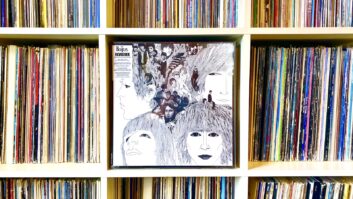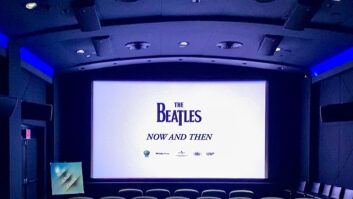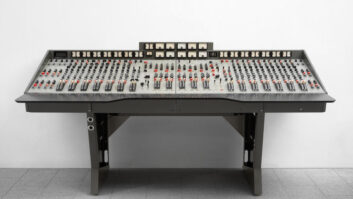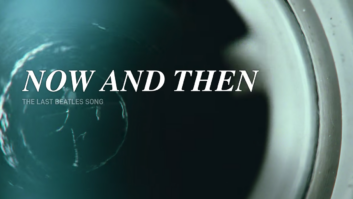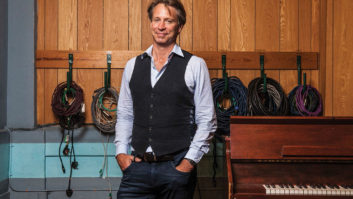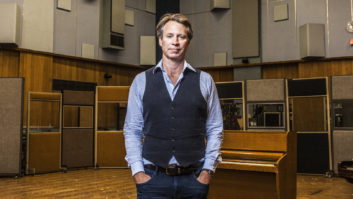
The Beatles’ music has inspired millions of people over the years. Some were stirred to enter the music world, becoming recording engineers or composers, while others were content to simply obsess over unreleased takes and demos gathered from uncharted corners of the internet. Scott Freiman was moved to do all three things—become a noted composer, found his own studio, and use his knowledge gained from both endeavors to enjoy the Beatles’ work perhaps more fully than most people. Now he’s turned all those passions into an ongoing endeavor: a series of lectures known as Deconstructing The Beatles, where he explains how the Fab Four created some of the most iconic music of the 20th Century.
Speaking before a recent hour-long talk on the creation of “Strawberry Fields Forever” at Oceanside Library in Oceanside, NY, Freiman explained, “This whole thing started when I did a show in my living room. It was a one-time thing, just to get some friends together and talk about music, and they said, ‘You’ve got to do this out there—and here’s the name of someone at a school and someone at a theater’ and I started just tiptoeing it in. I discovered there was a huge audience for it.”
Using a mixture of Apple Keynote slides, video and numerous clips of the song in various states of completion, Freiman led the mainstream audience of roughly 60 people from John Lennon’s mumbled demos, recorded in a hotel bathroom in Spain, through individual tracks laid down at Abbey Road in London, to the final version, presented complete with one of the group’s early psychedelic music videos. Despite having to explain conceptual ideas like bouncing tracks, tape speeds and splices, the crowd never got lost or dozy over technical details.

“I try to do a blend of explaining the technology in ways that people who know nothing about a studio can understand,” said Freiman, “and yet there’s enough technical tidbits for studio geeks and there’s enough Beatles stuff for Beatles geeks. I’ve often had people afterwards who said, ‘I thought I knew everything about them, but I’ve learned something.’”
When not poring over other musicians’ creations, Freiman can be found hard at work on his own; his original music has been performed at Lincoln Center and Carnegie Hall, and can be heard in the Discovery Channel’s Emmy-award winning series, Life, for which he also mixed all the music throughout its 11 episodes. In addition to work as a sound designer for various documentaries, he’s also the owner of Second Act Studio in Irvington, NY, which was designed by studio architect, John Storyk.
In coming months, however, he’ll be spending less time behind the mixing desk and more time on stages, analyzing the work of the Fab Four in a variety of lectures he gives on everything from entire LPs like The White Album and Sgt. Pepper’s Lonely Hearts Club Band, to individual tracks like “Tomorrow Never Knows.” The schedule is filling up quickly, it turns out. “I’ve done presentations at Facebook and Google, and I’m going to Pixar in July,” said Freiman. “I’m actually going to be teaching a course on the Beatles at Yale in the fall.”
While the studio techniques he explains are now dated, the thrill of hearing music that the public has become inured to in a fresh way keeps the audiences coming. “People say ‘I won’t listen to music the same way again’ once they see how you take something apart and you explain what goes into a song. A lot of people think that you press a button and record it, but—especially with a song like ‘Strawberry Fields Forever’ where so much went into the construction of it—it’s very interesting to see how it comes to life. “
